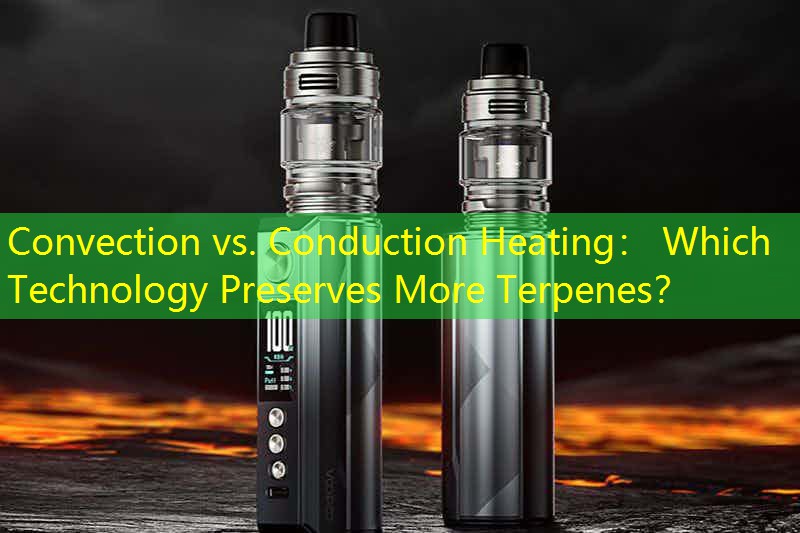Introduktion
The world of herbal vaporization has evolved dramatically with the advent of various heating technologies. Bland dessa, konvektion och ledningsuppvärmning har fått stor uppmärksamhet, särskilt när det gäller deras förmåga att bevara de känsliga smakföreningar som kallas terpener. Den här artikeln kommer att ge en djupgående titt på konvektion vs. ledningsvärmeteknik, utvärdera deras egenskaper, användarupplevelser, konkurrensmässiga jämförelser, för- och nackdelar, och målgruppsdemografi.
Heating Technologies Explained
Convection Heating
Convection heating uses hot air to heat the herbal material indirectly, möjliggör jämn och exakt temperaturkontroll. Denna metod säkerställer att de aktiva föreningarna, inklusive terpener, förångas vid optimala temperaturer utan att bränna materialet. Användare uppskattar konvektion för dess rena och smakrika ånga, which can preserve the unique profiles of various strains.
Ledning Uppvärmning
Däremot, conduction heating relies on direct contact between the heating element and the herbal material. While this method is often quicker and can provide a robust vapor experience, it risks overheating, potentially degrading terpenes and other volatile compounds. Users generally find conduction devices to be more straightforward and often less expensive, but they may sacrifice flavor integrity for speed.

Produktfunktioner
Both convection and conduction vaporizers come with a range of features, including temperature control, portability, och batteritid. Convection devices generally feature more advanced technology that facilitates precise temperature adjustments. Däremot, conduction models may offer simplified interfaces, making them more user-friendly for casual users.
Användarupplevelse
The user experience varies significantly between the two technologies. Convection heating often requires a learning curve to master the perfect draw and temperature settings. Dock, users report that the payoff is a richer, more nuanced flavor. Omvänt, conduction users appreciate the ease of use but might notice diminished flavor profiles due to uneven heating.
Competitive Comparison
In the competitive landscape, brands such as Volcano and Firefly lead in convection heating, while PAX and G Pen excel in conduction options. Convection devices typically come at a higher price point, reflecting their superior flavor-preserving abilities. Yet, conduction vaporizers often appeal to budget-conscious consumers seeking simplicity and convenience.
För- och nackdelar
Convection Heating Pros
– Superior terpene preservation
– Even heating
– Greater flavor depth
Convection Heating Cons
– Higher cost
– More complex to use
Conduction Heating Pros
– Quick heat-up time
– User-friendly
– Generally less expensive
Conduction Heating Cons
– Potential for uneven heating
– Risk of flavor degradation
Målanvändaranalys
Target demographics for convection vaporizers typically include connoisseurs and discerning users who prioritize flavor and quality. These individuals are often willing to invest more in a premium product. Däremot, conduction devices tend to attract more casual users or those new to herbal vaping, as they offer an accessible entry point without the need for extensive knowledge about temperature control or vaporization techniques.

Slutsats
Sammanfattningsvis, the choice between convection and conduction heating largely depends on individual preferences and priorities. Convection provides a superior experience for those seeking to preserve terpenes and enjoy rich flavors, while conduction offers simplicity and speed for casual users. Understanding these differences is crucial for making an informed decision in the dynamic world of herbal vaporization.







